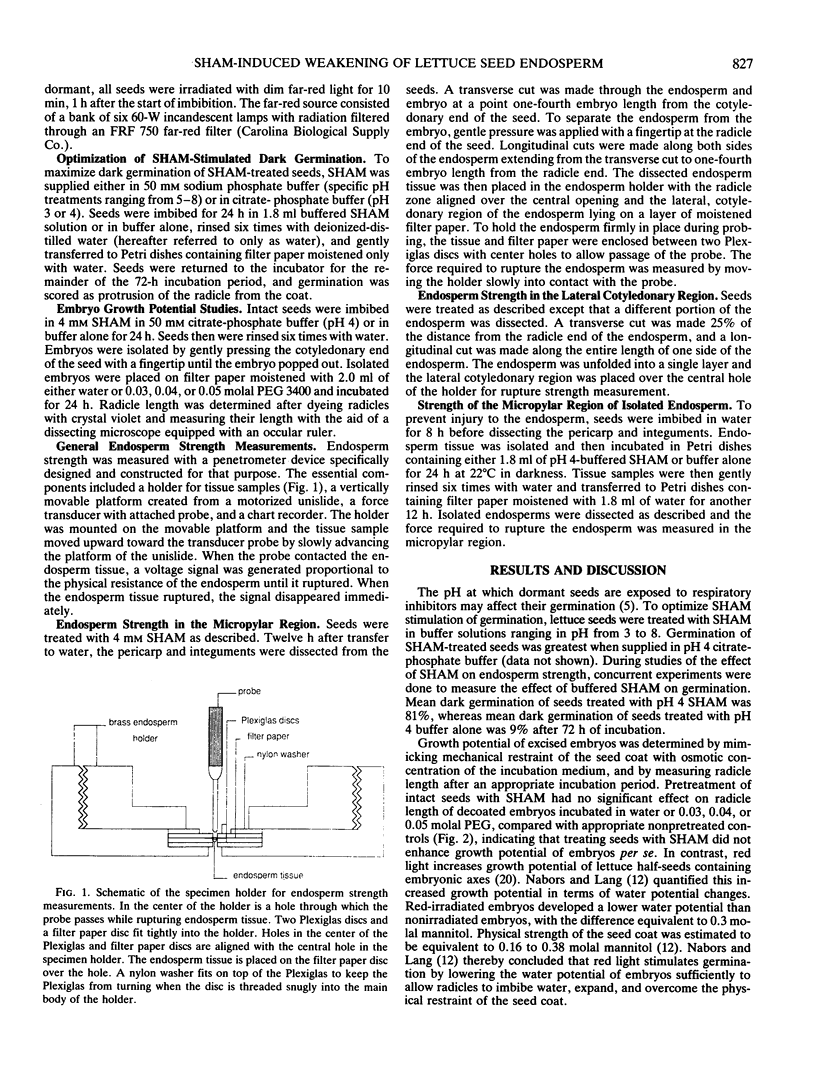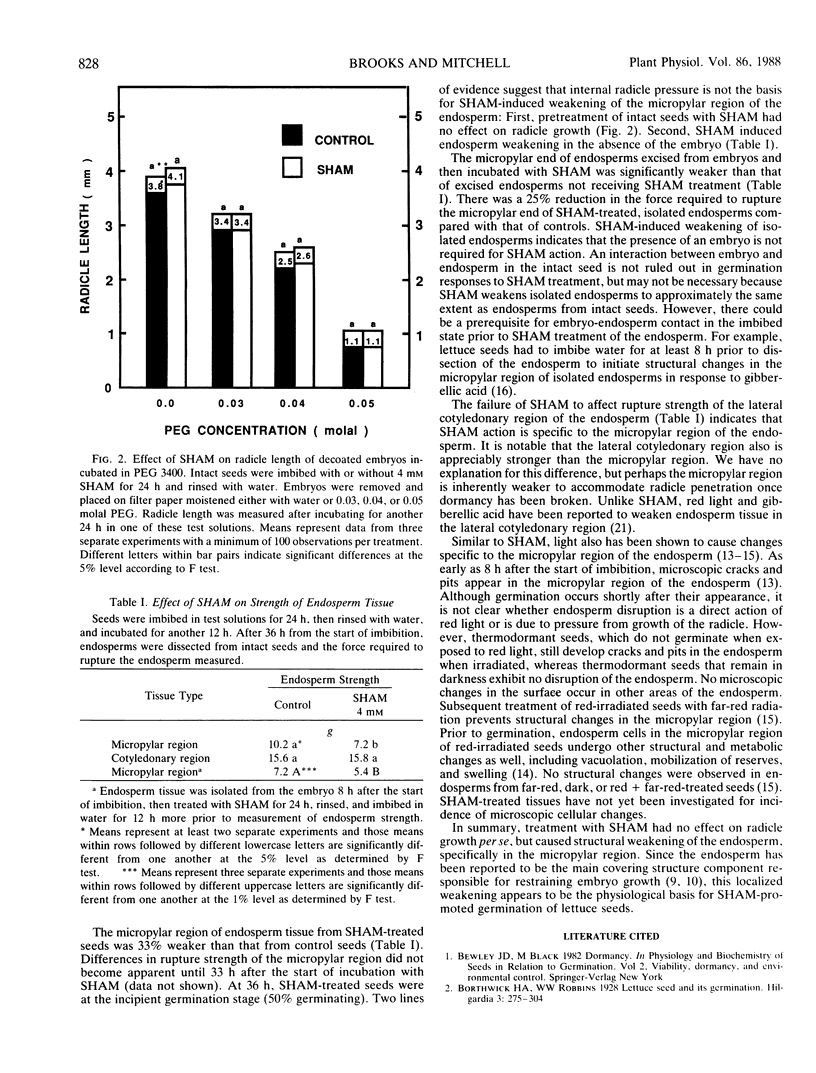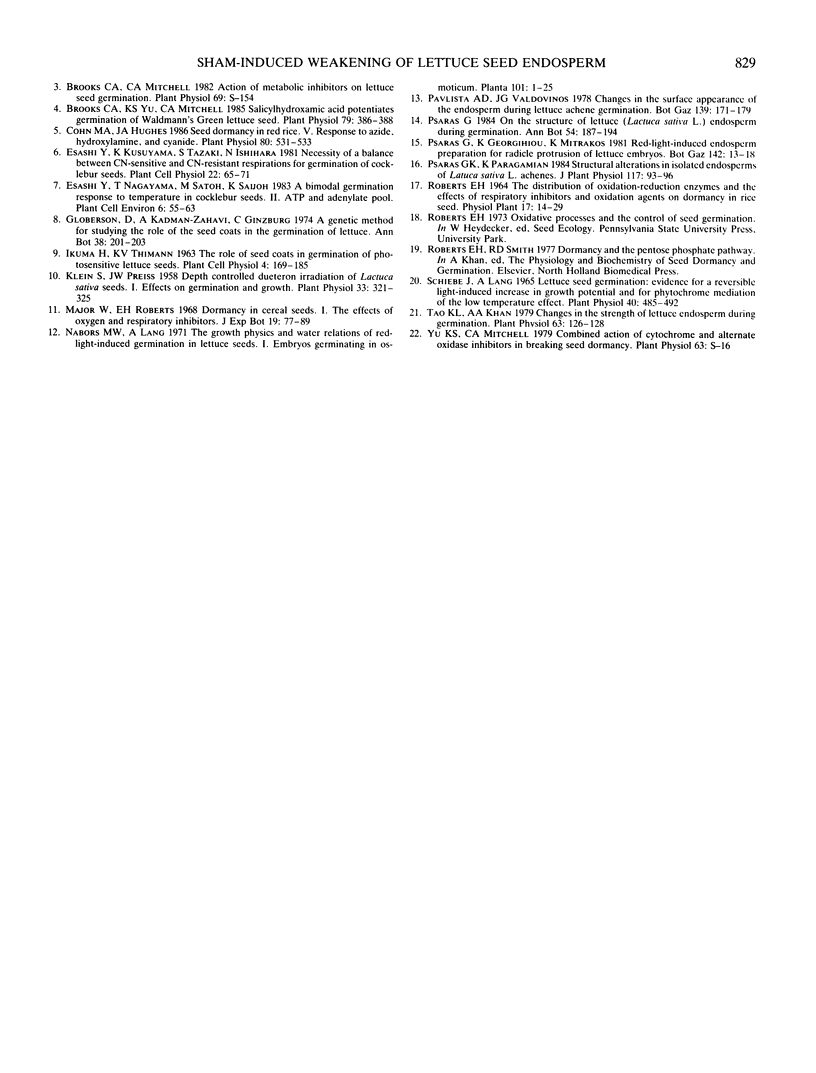Abstract
Salicylhydroxamic acid (SHAM) stimulated germination of photosensitive lettuce (Lactuca sativa L. cv Waldmann's Green) seeds in darkness. To determine whether SHAM acts on the embryo or the endosperm, we investigated separately effects of SHAM on growth potential of isolated embryos as well as on endosperm strength. Embryo growth potential was quantified by incubating decoated embryos in various concentrations of osmoticum and measuring subsequent radicle elongation. Growth potential of embryos isolated from seeds pretreated with 4 millimolar SHAM was equal to that of untreated controls. Rupture strength of endosperm tissue excised from seeds pretreated with SHAM was 33% less than that of controls in the micropylar region. To determine if the embryo must be in contact with the endosperm for SHAM to weaken the endosperm, some endosperms were incubated with SHAM only after dissection from seeds. Rupture strength of SHAM-treated, isolated endosperms in the micropylar region was 25% less than that of untreated controls. There was no difference in rupture strength in the cotyledonary region of endosperm isolated from seeds treated with SHAM in buffer or buffer alone. SHAM therefore stimulates germination not by enhancing embryo growth potential, but by weakening the micropylar region of the endosperm enclosing the embryo.
Full text
PDF



Images in this article
Selected References
These references are in PubMed. This may not be the complete list of references from this article.
- Brooks C. A., Yu K. S., Mitchell C. A. Salicylhydroxamic acid potentiates germination of 'Waldmann's Green' lettuce seed. Plant Physiol. 1985;79:386–388. doi: 10.1104/pp.79.2.386. [DOI] [PMC free article] [PubMed] [Google Scholar]
- Cohn M. A., Hughes J. A. Seed dormancy in red rice : v. Response to azide, hydroxylamine, and cyanide. Plant Physiol. 1986 Feb;80(2):531–533. doi: 10.1104/pp.80.2.531. [DOI] [PMC free article] [PubMed] [Google Scholar]
- Klein S., Preiss J. W. Depth Controlled Deuteron Irradiation of Lactuca sativa Seeds. I. Effects On Germination and Growth. Plant Physiol. 1958 Sep;33(5):321–325. doi: 10.1104/pp.33.5.321. [DOI] [PMC free article] [PubMed] [Google Scholar]
- Scheibe J., Lang A. Lettuce Seed Germination: Evidence for a Reversible Light-Induced Increase in Growth Potential and for Phytochrome Mediation of the Low Temperature Effect. Plant Physiol. 1965 May;40(3):485–492. doi: 10.1104/pp.40.3.485. [DOI] [PMC free article] [PubMed] [Google Scholar]
- Tao K. L., Khan A. A. Changes in the Strength of Lettuce Endosperm during Germination. Plant Physiol. 1979 Jan;63(1):126–128. doi: 10.1104/pp.63.1.126. [DOI] [PMC free article] [PubMed] [Google Scholar]



